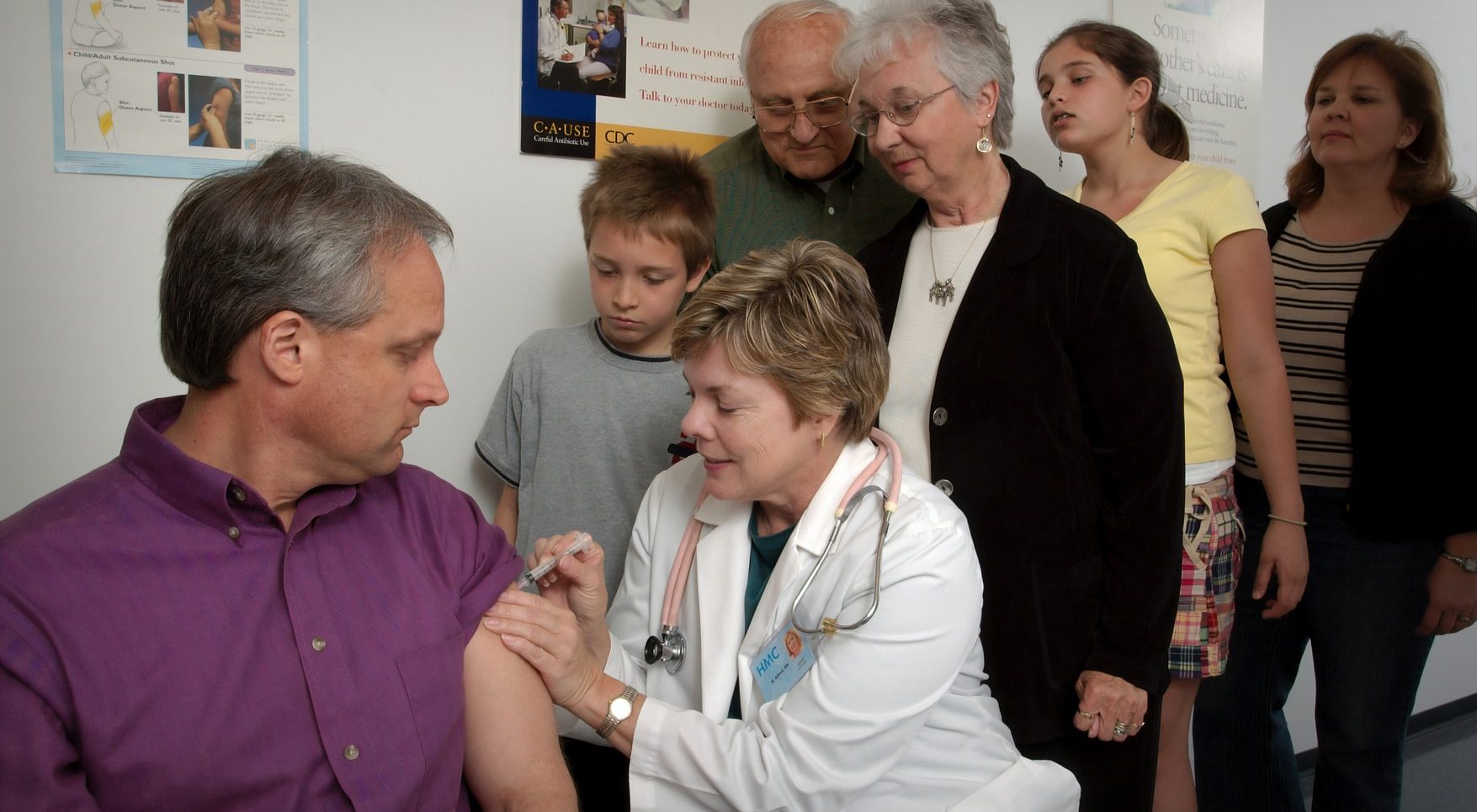
The COVID-19 pandemic introduced ‘public health problem’ into the world’s vocabulary. But what elevates a health issue to the status of public health problem? In this article I will attempt to unpack, explore and answer this surprisingly challenging question, and show that general practice – which we often consider to contribute little to public health beyond vaccination schedules and population screening programmes – might constitute a much more essential and entangled role in public health than is often realised.
Public health incorporates an enormous diversity of health issues within its ever-expanding remit, from the immediate and unequivocal dangers posed by specific named pathogens, to the vague and uncertain harms threatened by abstract changes in the world’s climate. This sprawling landscape of seemingly distinct features — which is traditionally categorised into silos of health protection, health improvement, and health systems strengthening — makes it difficult to identify a single factor, variable, or characteristic that is common to all public health issues and powerful enough to identify a health issue as a ‘public health problem.’ I will now explore some of these variables and test their suitability for this purpose.
Public health incorporates an enormous diversity of health issues within its ever-expanding remit, from the immediate and unequivocal dangers posed by specific named pathogens, to the vague and uncertain harms threatened by abstract changes in the world’s climate.
Scale: Concern over the health of a public or population implies potentially hundreds of thousands or even millions of people are affected by, or at least at risk from, the health issue in question. For example, the COVID-19 pandemic is an undisputed public health problem that has infected over half a billion people and claimed over 6 million lives worldwide.1 However, the confirmation of only a single case of Ebola, plague or smallpox would undeniably constitute an enormous public health problem, even if the total number of cases failed to exceed one. Instead, perhaps the number of people at risk is key, such as the city-wide exposure of an industrial smog or the downstream inhabitants of a polluted water source? Yet, contact tracing for cases of bacterial meningitis is usually restricted to the index case household, involving a much smaller number of individuals than in the previous examples. As such, scale could range from a handful of people to a whole nation state or even the entire globe being at risk of the problem, meaning this does not seem like a useful characteristic to render a specific health issue a public health problem.
Severity: Perhaps a particular health issue must reach a threshold of severity for it to be legitimately considered as a public health problem? Yet, where this threshold lies is extremely unclear. The traumatic effects of not wearing a seatbelt are easy to recognise after a road traffic collision, and the impact of living on the streets is relatively simple to understand with regards to one’s health. But the effects of a single additional alcoholic beverage on an individual’s health cannot be assessed to any reasonable degree. Similarly, the effects of alcohol minimal unit pricing, taxation of tobacco and sugary drink levies are usually opaque at the individual level and can only be realised on a population scale. Reducing alcohol purchases by a few grams per household may have no discernible impacts on its individual members, but at the scale of entire countries may make meaningful improvements to key disease metrics.2 So, rather than focusing on severity, perhaps the total burden of disease is the outcome of relevance, calculated as severity multiplied by scale? But this just presents us with the same problem of thresholds. A single child drowning is a preventable tragedy, just like the heart attacks of twenty obese men. But, does one exceed the threshold while the other does not, and precisely where does this threshold lie by which to assess each scenario?
The mode of transmission: ‘Communicable diseases’ are infectious in nature, and are clearly within the remit of public health practitioners. Vaccination programmes aim to achieve herd immunity, while outbreak response cells address unexpected transmission. Yet, non-communicable diseases, such as cardiovascular diseases, cancer and mental ill-health, account for the greatest burdens of morbidity and mortality across high-income countries, and are also the focus of epidemiological study and public health interventions (interestingly, while ‘non-communicable’ in the sense of infectious transmission, these diseases, or at least their risk factors, are in fact highly communicable across generational boundaries, through the inheritance of genetic susceptibility and learned lifestyles and behaviours).
The health system: Quality, safety, efficiency, accessibility, acceptability, affordability and equity are all characteristics of health systems that, in the event that they are low or suboptimal, pose a public health problem to the population they serve. Certainly, a highly trained, accountable and professional health workforce increases the likelihood that a public health problem it faces will be successfully ameliorated, but not all ‘public health problems’ are captured by this metric (such as those posed by poor food, housing and air quality, for example), meaning this is not sufficient for the definition we seek. Or, should the focus settle on risk factors for disease, rather than the final expression of established ill-health? Such an approach would encapsulate the wider and social determinants of health,3 including workplace environments, education, water and sanitation, along with the physiological variables associated with future ill-health.
Yet, while these more abstract influences capture many of the issues widely regarded as public health problems, they are by definition future-orientated predictive measures that express the likelihood of ill-health being manifest in the future. This is of course highly useful for preventative measures, but fails to incorporate the here-and-now issues that are rightly regarded as public health problems.
So far, my efforts to ascertain precisely what amounts to a public health problem have been rather unsuccessful. Perhaps, rather than attempting to establish a firm definition of a public health problem, a more fruitful approach woukd be to identify what a public health problem is not. For example, rare diseases, such as those that affect less than one in 50,000 people,4 by definition do not affect numbers of people on public or population scales, and so surely do not constitute public health problems? In the same manner, illnesses and conditions that affect individuals without immediate risk of transmission to others, such as alcohol intoxication or illicit substance misuse, do not directly impact the public. However, the secondary effects of these conditions, and the way in which they are managed, have profound implications for large numbers of people beyond the individuals they directly affect. For example, the influence on crime and economic prosperity of drug and alcohol abuse indirectly affects the communities in which these behaviours take place, while the finite resources of socialised health systems must be reallocated away from other priority areas to deal with the disease burdens generated by these conditions. The resulting harms to distributive justice manifest in longer waiting lists, more expensive prescriptions, and less effective preventative measures for the wider population, thereby constituting their own public health problems.
…what constitutes a public health problem is rather challenging to succinctly, wholly and consistently define… Simultaneously, finite resources and distribution decision-making create an umbrella of impacts that cover entire populations.
By this point, it has hopefully become clear that what constitutes a public health problem is rather challenging to succinctly, wholly and consistently define. The relevant variables include the number of people affected by or at risk from a state of ill-health, the burden of disease within the population in question, and the statistical likelihood of harmful effects subsequently occurring following exposure to risk factors. Simultaneously, finite resources and distribution decision-making create an umbrella of impacts that cover entire populations. Ultimately, a single definition appears to be both near-impossible yet also unhelpful, since the taxonomy of variables is too unwieldly diverse to establish a concept that is meaningful and complete.
However, the process of thinking and writing about this puzzle has revealed to me the extent to which general practice partakes in public health endeavours. Each of the variables explored in this article involves primary healthcare at the centre of its functioning. This shouldn’t be surprising, since the ‘public’ that is subjected to public health problems consists of multitudes of individuals who are cared for by GPs. Regardless of the scale, burden or transmission mode of a disease, GPs investigate, diagnose and ultimately manage at least a portion, if not the entirety, of the problem or risk factor of public health concern. As such, while public health often works closely alongside, or is even embedded within, contemporary primary healthcare, the Venn diagram of their remits is largely overlapped. Yes, vaccination schedules and population screening programmes are easily identified as ‘public health in primary care,’ but it seems that much more of general practice is actually public health, and perhaps a great deal of public health is in fact general practice.
So, what does all this mean? For me, it provides a novel perspective into my own clinical practice through which I see the effect of what I’m doing with individual patients on the much larger stage of population health.
In trying to deal holistically with the whole patient before me, expanding this sphere beyond the individual patient to encompass the health outcomes of the entire population feels like a more satisfying, sustainable and ultimately complete means of practice.
References
1. World Health Organization. WHO Coronavirus (COVID-19) Dashboard. https://covid19.who.int (accessed 5 July 2022).
2. Peter Anderson, O’Donnell A, Kaner E, et al. Impact of minimum unit pricing on alcohol purchases in Scotland and Wales: controlled interrupted time series analyses. The Lancet Public Health 2021; 6(8): E557-E565.
3. Dahlgren G, Whitehead M. World Health Organization Regional Office for Europe. European strategies for tackling social inequities in health: Levelling up Part 2. 2006. https://www.euro.who.int/__data/assets/pdf_file/0018/103824/E89384.pdf (accessed 5 July 2022).
4. Clarke S, Ellis M, Jack Brownrigg J. The impact of rarity in NICE’s health technology appraisals. Orphanet Journal of Rare Diseases 2021; 16(218).








